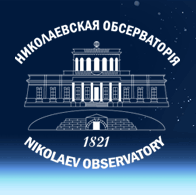|
2013-09-09 08:22:26
New rules have been approved by the IAU Executive Committee, following the recommendations of IAU Executive Committee Task Group on “Public Naming of Planets and Planetary Satellites”.
The document "Public Naming of Planets and Planetary Satellites: Reaching Out for Worldwide Recognition with the Help of the IAU" is now available online for download in PDF format (128 KB). Read about IAU's statements and rules regarding suggestions for names and public naming campaigns.
Preamble
People have been naming celestial objects for at least as long as there has been written word. Almost every civilization and culture uses names to describe the stars and planets visible to the naked eye, as well as their apparent distribution on the sky.
The concept of the public naming of astronomical objects is not new and it predates any attempt at their scientific naming, also known as designations or nomenclature. It is only in modern times, with the availability of ever more sophisticated telescopes both on the ground and in space, that astronomers have come to need established naming procedures for celestial objects to use in their research. Many objects now have both a public name and a scientific designation, e.g the Orion Nebula and Messier 42, Antares and Alpha Scorpii, the Sombrero Galaxy and NGC 4594, etc., with some having more than one each. The scientific and public names for a given object are often used interchangeably in the scientific literature. Synonyms can be found in various databases, for instance through the Sesame name resolver, which connects to the SIMBAD repository in Strasbourg, France and the NASA/IPAC Extragalactic Database at JPL, California, USA.
In 1919, the International Astronomical Union (IAU) was created in the aftermath of the First World War: astronomers, like other scientists, decided to exchange information and discoveries across borders in a formal way. The discovery of an increasingly large number of celestial objects led astronomers to adopt various classification schemes, in particular for small bodies in the Solar System. At first informally, it became increasingly common for public suggestions sent to the IAU to be included in the decision making process when naming objects in the Solar System — Pluto being a good example. Given the large number of asteroids now known (almost 600 000), it became inevitable that some rules needed to be introduced by the IAU. Scientific designations typically have a class reference and a number, as paraphrased by the famous asteroid B612 appearing in Antoine de Saint-Exupéry’s 1943 book ‘The Little Prince,’ and even public names must be officially selected. To date, nearly 18 000 asteroids have names, a significant number having been suggested by the public.
Statement and Rules
The IAU has been the official arbiter of planetary and satellite naming since its inception in 1919. The IAU’s decisions are officially adopted by the nearly 11 000 professional astronomers who are its members, coming from more than 90 countries. Naming celestial objects with scientific designations or public names is one of the duties that the IAU takes on for the benefit of mankind. The influence of the IAU goes far beyond the circle of professional astronomy; it also has an important role in education and outreach activities that reach millions of people. The International Year of Astronomy in 2009, initiated and supported by the IAU, reached upwards of 800 million individuals.
It is therefore in line with a long-established global tradition and experience that the IAU fully supports the involvement of the general public, whether directly or through an independent organised vote, in the naming of planetary satellites, newly discovered planets, and their host stars.
The IAU does not consider itself as having a monopoly on the naming of celestial objects — anyone can in theory adopt names the way they choose. However, given the publicity and emotional investment associated with these discoveries, worldwide recognition is important and the IAU offers its unique experience for the benefit of a successful public naming process (which must remain distinct, as in the past, from the scientific designation issues).
Individual suggestions for names
Individual suggestions should be sent to iaupublic@iap.fr. They will be handled on a case-by-case basis, with advice given on the best way to proceed.
Please note, however, the naming rules mentioned in items 6 and 7 below.
Public naming campaigns
In order to assist in the selection process while avoiding mistakes due to incomplete information, the IAU asks organizations planning to issue a public naming campaign to do so in association with the IAU, and inform its General Secretary of their intentions and proposals. The IAU is ready to assist in resolving problems and providing relevant information. More precisely, the IAU will welcome proposals from organizations, provided the following rules are followed:
1. Prior to any public naming initiative, often a vote (hereafter "the process”), the IAU should be contacted from the start by Letter of Intent sent to the IAU General Secretary;
2. The process should be submitted in the form of a proposal to the IAU by an organization. Scientists or science communicators may be involved in the process;
3. The organization should list its legal or official representatives and its goals, and explain the reasons for initiating the process for naming a particular object or set of objects;
4. The process cannot request nor make reference to any revenues, for whatever purpose;
5. The process must guarantee a wide international participation;
6. The public names proposed (whether by individuals or in a naming campaign) should follow the naming rules and restrictions adopted for Minor Bodies of the Solar System, by the IAU and by the Minor Planet Center.
In particular, proposed names should be:
● 16 characters or less in length,
● preferably one word,
● pronounceable (in as many languages as possible),
● non-offensive in any language or culture,
● not too similar to an existing name of an astronomical object. In addition:
● names of pet animals are discouraged,
● names of a purely or principally commercial nature are not allowed,
● names of individuals, places or events principally known for political or military activities are unsuitable.
7. The process must be respectful of intellectual property:
a. it must have the formal agreement of the discoverers, who may participate
in the process;
b. it must demonstrate that previously existing names, when proposed, are free for public use (i.e., for instance, not subject to copyright royalties, as could be the case for names created in fiction works, like books, plays, movies, etc.);
Names already assigned to astronomical objects can be checked using the links: for galactic and extragalactic names, and the MPC database for solar system names.
Note that organizations not prepared to follow the abovementioned rules cannot be supported by the IAU, and the names resulting from their process will not be recognized by the IAU.
Until the proposal is finalized and the process publicly started with the agreement of the IAU, the discussions between the proposing organization and the IAU must be kept strictly confidential for both parties. After concluding any public consultation, the final submission of the selected names to the IAU, and subsequent discussions with the IAU, must also be kept confidential..
When the organization recommends a name, or names, to the IAU, an appropriate IAU Executive Committee Working Group will solicit the expertise of the relevant IAU bodies (typically, specialized Commissions and/or Working Groups), and accept input from the organization, to select the name(s) that will constitute the official IAU sanctioned name(s). The selected name(s) will be publicly announced by the IAU.
It is understood that, if a scientific designation for the object(s) already exists, the public name will not replace it, but will be recognized by the IAU as the appropriate publicly used name for the object(s), and be publicized as such, along with due credit to the organization or individual that proposed it. This public name may then be used internationally along with, or instead of, the scientific designation, permanently and without restrictions.
These rules have been approved by the IAU Executive Committee, following the recommendations of IAU Executive Committee Task Group on “Public Naming of Planets and Planetary Satellites”.
IAU Task Group Members
Thierry Montmerle, IAU General Secretary (Chair) montmerle@iap.fr
Lars Lindberg Christensen, President of IAU Commission 55 (Communicating Astronomy with the Public), IAU Press Officer
Xiaowei Liu, IAU Vice-President Giovanni Valsecchi, President of IAU Division F (Planetary Systems and Bioastronomy)
Robert Williams, Past IAU President, Executive Committee Adviser
|




